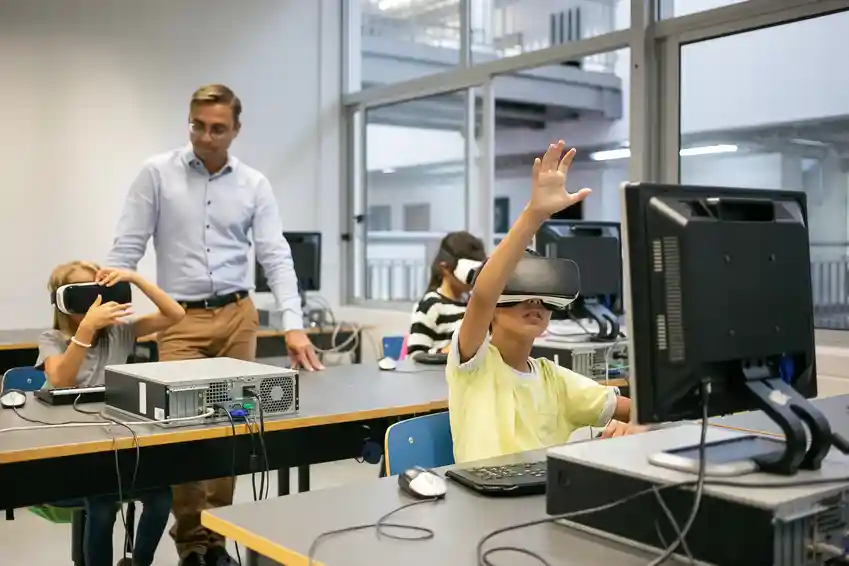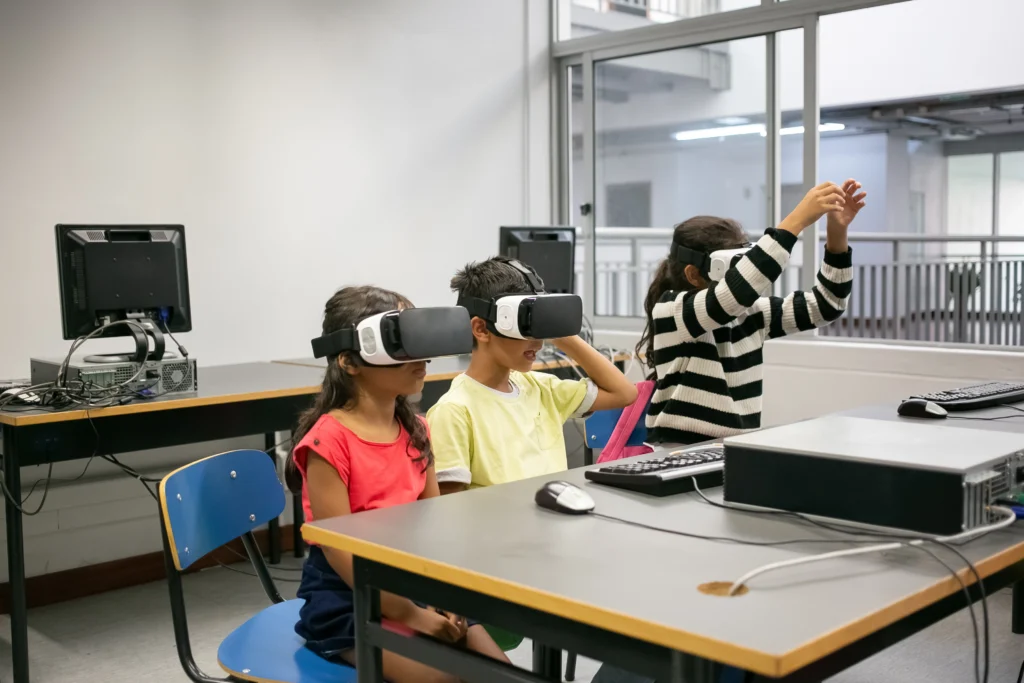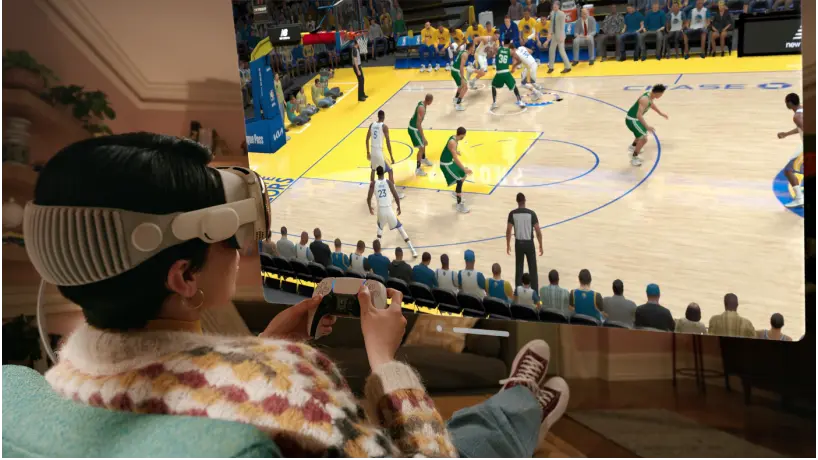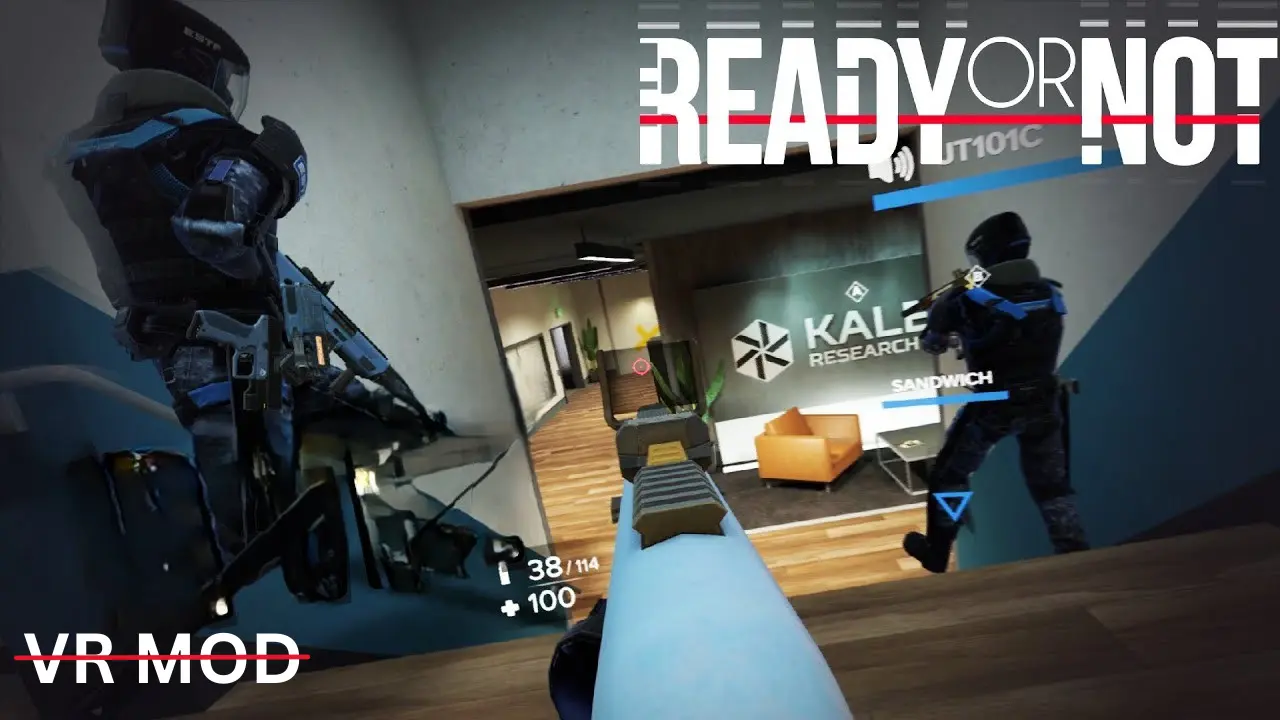Table of Contents
Education has evolved significantly with technological advancements, making learning more engaging and effective. Among these innovations, Virtual Reality (VR) has emerged as a game changer, reshaping the way students absorb and interact with the knowledge.

Traditional learning methods often relay on textbooks, lectures, and occasional practical experiments. However, VR is revolutionizing education by fostering deeper comprehension, improving retention, and making learning an enjoyable experience.
How Virtual Reality Learning is Powerful
One of the most significant benefits of VR in education is its ability to create an immersive learning environment. Unlike conventional methods where students passively listen or read, VER allows them to interact with the subject matter. For example, instead of reading about the solar system, students can take a virtual tour of the planets, observing celestial bodies up close. This immersive approach enhances observation skills by allowing students to explore and analyze the concert in a highly detailed and engaging manner.
Grabbing Learner’s Engagement Through Interactivity
Engagement is a key factor in effective learning. Traditional lectures often fail to capture student’s attention leading to disinterest and lower retention rates. VR solves this problem by making lessons interactive and dynamic. In a Virtual Reality-powered classroom, students are not just listeners instead they actively participate in the learning process. Students stay engaged throughout the learning process. Thi hands on approach significantly boosts their understanding and memory retention.
VR Bridges Gaps Between Theory and Practical

Many subjects, especially in Science, Technology, Egineering and Mathamatics, it requires more practical application for better comprehension. However limitations such as lack of resources, safety concerns, and accessibality often hinder the practical learning process. Virtual Reality learning bridges the gap in between by offering realistic simulations where students can practice complex concepts without physical constraints. For instance medical students can perform virtual surgeries, engineering students can build the test prototypes , and many students of many stream can perform various type of tasks. This not only enhances their observation skills but also boosts confidence in real world applications.
Every student has a unique way of learning. While some grasp concepts better through visuals, others prefer hands on experiences. Virtual Reality accommodates different learning styles for various students capable to learn from various style by providing a multi sensory experience. Visuals learners benefit from 3D models and animations, kinesthic learners engage through interactive activities and auditory learners absorb information through immersive storytelling. This personalized approach ensues that students learn in a way that best suites their cognitive, making education more inclusive and effective.
Check Out:- Top University and College for Augmented/Virtual Reality (AR/VR) in the USA
Virtual Reality improves Retention and Recall in Learners
Studies have shown that students retain information better when they experience it rather than just reading or hearing about it. VR enhances retention by engaging multiple senses simultaneously, reinforcing learning through active participation. For example, a student who virtually explores ancient Rome is more likely to remember its architecture, culture, and historical significance compared to reading about it in a textbook. This improved recall translates into better academic performance and a deeper understanding of subjects.
VR encourages students to think outside the box by allowing them to create, experiment, and discover in a virtual world. For instance, students can design their own cities, build complex machinery, or even develop their own VR experiences. This nurtures problem-solving skills, creativity, and innovation essential qualities for future leaders and professionals.
Authors Corner
Virtual Reality is transforming education by making learning more engaging, interactive, and effective. By enhancing observation skills, boosting engagement, and breaking traditional barriers, VR is shaping a future where students actively participate in their education rather than passively absorbing information. The technology fosters a deeper connection to the learning material, making abstract concepts more tangible and understandable.
Moreover, VR cultivates curiosity, creativity, and problem-solving skills by allowing students to explore beyond traditional classroom boundaries. It empowers students to learn at their own pace, building confidence and reducing anxiety associated with conventional assessment methods.
As the technology continues to evolve and become more accessible, its role in education will only expand. Schools and institutions must embrace VR as a standard learning tool, integrating it into curricula to maximize student engagement and comprehension. The investment in VR is an investment in the future, preparing students with the skills they need to navigate a rapidly changing world.
The shift from passive to active learning through immersive experiences marks the dawn of a new educational paradigm, one that fosters lifelong learning, curiosity, and a deeper understanding of the world.







